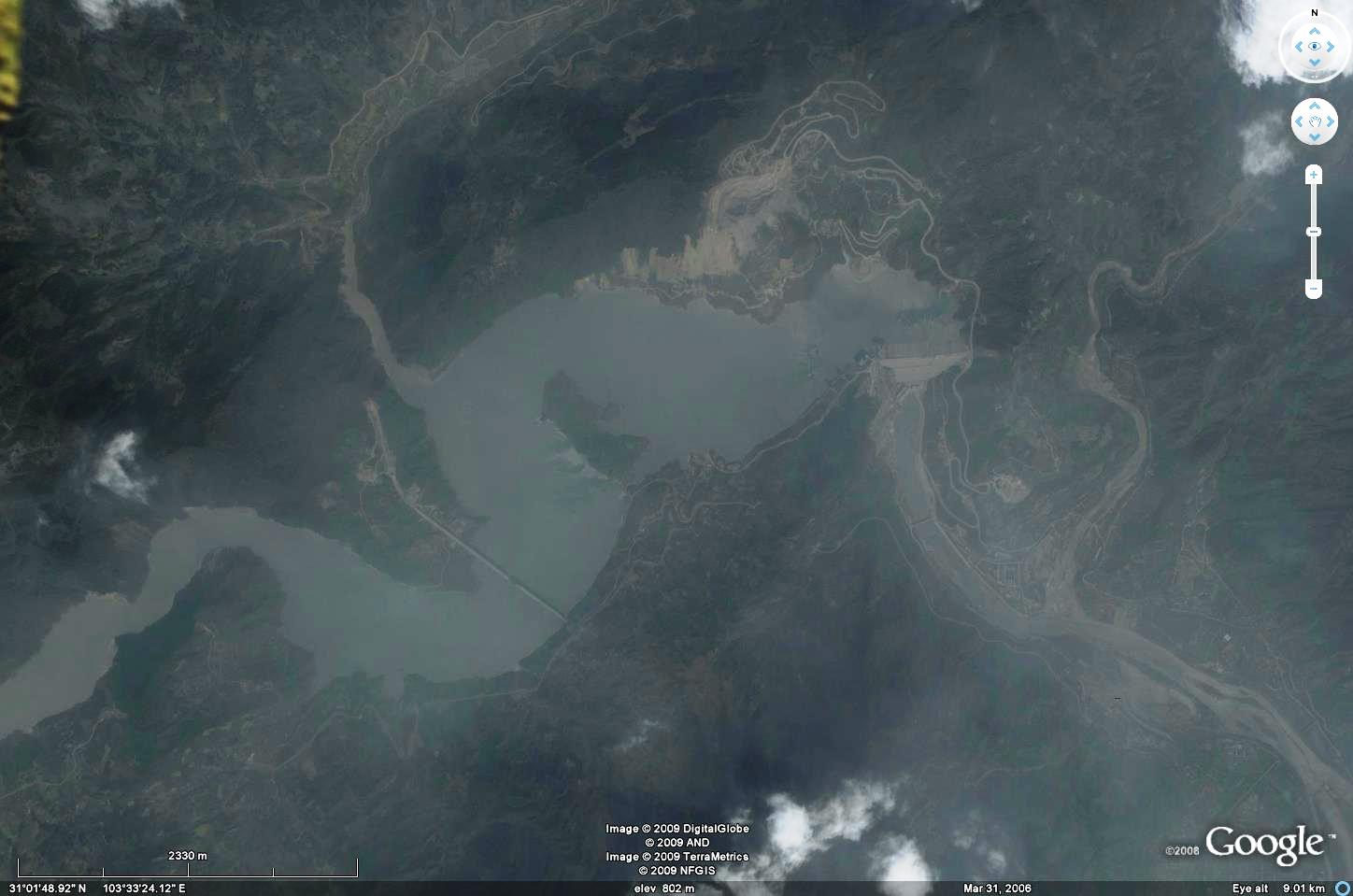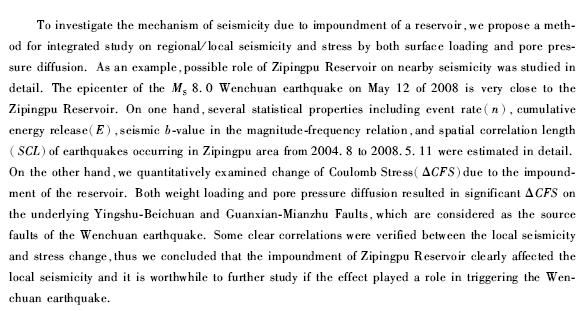29 January 2009
Was the Wenchuan (Sichuan) earthquake triggered by humans?
Posted by Dave Petley
At recent edition of Science carries a really intriguing review piece that examines the triggers of the Wenchuan earthquake. Although earthquake triggering is really beyond the scope of this blog, the huge number of devastating landslides that the earthquake induced means that this is of interest. The article can be read online here.
The article has emerged from work undertaken at two different locations. Christian Klose of Columbia University presented a paper (abstract here) at the AGU Fall meeting in December in which he suggested that the earthquake could have been induced by “local mass imbalances” associated with the accumulation of “at least 320 million tonnes of water” in the upper Min Valley – a clear reference to the construction of the Zipingpu Dam, which is located close to the fault, and which was completed in December 2004. The Google Earth image below shows the dam and lake, although the quality is not great:
 The idea is that the additional weight of the water acted in a manner that is very similar to the triggering of landslides on slopes – i.e. it acted to both increase shear stress and to decrease the normal effective stress, rendering the fault more likely to fail (slide). This is apparently backed up by a paper by Lei Xinglin, of the China Earthquake Administration in Beijing and GSK/AIST, which was published in the Chinese journal “Geology and Seismology” last month. That paper is also available online here, but it is in Chinese, so I cannot really tell what it is saying in detail. According to the Science article, the paper apparently also suggests that the reservoir may have been a factor, without coming to a firm conclusion. The diagrams in the paper are worth a look, and have English captions. The abstract is as follows:
The idea is that the additional weight of the water acted in a manner that is very similar to the triggering of landslides on slopes – i.e. it acted to both increase shear stress and to decrease the normal effective stress, rendering the fault more likely to fail (slide). This is apparently backed up by a paper by Lei Xinglin, of the China Earthquake Administration in Beijing and GSK/AIST, which was published in the Chinese journal “Geology and Seismology” last month. That paper is also available online here, but it is in Chinese, so I cannot really tell what it is saying in detail. According to the Science article, the paper apparently also suggests that the reservoir may have been a factor, without coming to a firm conclusion. The diagrams in the paper are worth a look, and have English captions. The abstract is as follows:

So how likely is this? To be honest my gut reaction is not very likely at all, but this certainly needs further work. Klose in his abstract says that:
“Shear stresses increased by >1kPa on the Beichuan fault at the nucleation point in about 20km depth. Normal stresses decreased by <-4kPa and weakened the fault strength. Pore pressure increases might have additionally destabilized the fault locally due to pore pressure diffusion. This effect, however, might be minor in 20km depth, because of low lateral fracture connectivity and permeability between the area of water accumulation and the Beichuan fault."
These stress changes seem to be rather small to have a significant effect. To put this into context, average atmospheric pressure at sea level is 101.325 kPa, so the changes that he is describing are a fraction of this. It is hard to believe that this has had a significant effect at 20 km depth, although the argument seems to be that the fault was so close to rupture that this tipped it over the edge, assisted by pore pressure diffusion. The depth of the earthquake nucleation point also renders this a little dubious, but Klose argues that in fact most of the energy release occurred close to the surface. In addition the fault appears to be rather further from the dam than the article suggests (the Science article says 500 m, but this is surely not the case (I think it is about 30 km to the epicentre for example). Note also that this reservoir is really not very large (c. 8 km long)
It will be very interesting to see how this plays out over the next few months. I remain very doubtful indeed but am certainly open to being persuaded if the science stacks up properly. Of course, if it is the case that the dam was a factor then this would have profound implications legally, socially and in terms of future development, especially given that HEP is coming back into fashion as non-renewable sources of energy decline.


 Dave Petley is the Vice-Chancellor of the University of Hull in the United Kingdom. His blog provides commentary and analysis of landslide events occurring worldwide, including the landslides themselves, latest research, and conferences and meetings.
Dave Petley is the Vice-Chancellor of the University of Hull in the United Kingdom. His blog provides commentary and analysis of landslide events occurring worldwide, including the landslides themselves, latest research, and conferences and meetings.
Lei Xinglin’s paper includes a brief English abstract at the end. See http://staff.aist.go.jp/xinglin-lei/Publication/Papers/Papers.htm. See http://internationalrivers.org/en/node/3827/ for further links to relevant documents.